Abstract
Purpose
The aim of this study was to evaluate the current status of dental geriatric education in Korea.
Materials and methods
One of the faculty members related in geriatric education was selected in each Korean dental school and the questionnaire on geriatric dental education was sent to them by e-mail. The questionnaire consists of the topics about undergraduate geriatric education and administration of the geriatric education. The information obtained from the questionnaire was compared with that of other countries in the aspects of curriculum, teaching methods, subjects, and existence of specific clinics, etc.
Results
Seven schools have geriatric dentistry in undergraduate education curriculum. Among those, only two schools had it taught by theoretical lecture as well as clinical lecture. Two dental schools had specific geriatric clinic among seven dental schools. Compared with the USA and western European countries, the geriatric dental education in Korea is at a developing stage and was perfunctory without diverse clinical experience.
Conclusion
In Korean dental schools, geriatric education was mostly conducted by lectures, and clinical teaching programs were not well organized compared with developed countries. It seems that the status of geriatric dental education in Korea has not been well established academically or administratively yet. (J Korean Acad Prosthodont 2011;49:229-35)
REFERENCES
1.World population prospects: the 2008 revision. United Nations Population Division. http://esa.un.org/unpp. 2009.
2.Statistics for Senior-Friendly Industry. Korea Health Industry Development Institute. 2007.
3.Prospective Population Census in the future, National Statistical Office. 2006.
4.Ettinger RL., Beck JD. Geriatric dental curriculum and the needs of the elderly. Spec Care Dentist. 1984. 4:207–13.

5.Thomas AM., Ship II. Current status of geriatric education in American dental schools. J Dent Educ. 1981. 45:589–91.

6.Kossioni A., Vanobbergen J., Newton J., Mu¨ller F., Heath R. European College of Gerodontology: undergraduate curriculum guidelines in gerodontology. Gerodontology. 2009. 26:165–71.

7.Ettinger R., Beck JD., Jakobsen J. The development of teaching programs in geriatric dentistry in the United States from 1974 to 1979. Spec Care Dentist. 1981. 1:221–4.

8.Moshman J., Warren GB., Blandford DH., Aumack L. Geriatric dentistry in the predoctoral curriculum. J Dent Educ. 1985. 49:689–95.

9.Saunders RH., Yellowitz JA., Dolan TA., Smith BJ. Trends in predoctoral education in geriatric dentistry. J Dent Educ. 1998. 62:314–8.

10.Shah N. Teaching, learning, and assessment in geriatric dentistry: researching models of practice. J Dent Educ. 2010. 74:20–8.

11.Mohammad AR., Preshaw PM., Ettinger RL. Current status of predoctoral geriatric education in U.S. dental schools. J Dent Educ. 2003. 67:509–14.

12.Preshaw PM., Mohammad AR. Geriatric dentistry education in European dental schools. Eur J Dent Educ. 2005. 9:73–7.

13.Fu Y., Ling J., Jang B., Yin H. Perspectives on dental education in mainland China. Int Dent J. 2006. 56:265–71.

14.Hebling E., Mugayar L., Dias PV. Geriatric dentistry: a new specialty in Brazil. Gerodontology. 2007. 24:177–80.

16.Hong ST. Low fertility with population ageing and Korean society. Democratic Soc Policy Res. 2007. 11:15–40.
17.Nitschke I., Mu ¨ller F., Ilgner A., Reiber T. Undergraduate teaching in gerodontology in Austria, Switzerland and Germany. Gerodontology. 2004. 21:123–9.

18.Zini A., Pietrokovsky J. Gerodontology teaching program at the geriatric dental clinic in Yad Sarah. Refuat Hapeh Vehashinayim. 2006. 24:31–4. 73.
19.Ettinger RL., McLeran H., Jakobsen J. Effect of a geriatric educational experience on graduates activities and attitudes. J Dent Educ. 1990. 54:273–8.

20.Petersen PE. The world oral health report 2003: continuous improvement of oral health in the 21st century-the approach of the WHO global oral health programme. Community Dent Oral Epidemiol. 2003. 31:3–23.
21.Appollonio I., Carabellese C., Frattola A., Trabucchi M. Dental status, quality of life, and mortality in an older community population: a multivariate approach. J Am Geriatr Soc. 1997. 45:1315–23.

22.Locker D. Does dental care improve the oral health of older adults? Community Dent Health. 2001. 18:7–15.
23.Locker D., Matear D., Stephens M., Jokovic A. Oral health-related quality of life of a population of medically compromised elderly people. Community Dent Health. 2002. 19:90–7.
24.Locker D. Dental status, xerostomia and the oral health-related quality of life of an elderly institutionalized population. Spec Care Dentist. 2003. 23:86–93.

25.Nitschke I., Mu ¨ller F. The impact of oral health on the quality of life in the elderly. Oral Health Prev Dent. 2004. 2:271–5.
Fig. 1.
Status of population scale in Korea for each year from 2005 to 2050. Source: Prospective population census in the future, National Statistical Office, 2006.
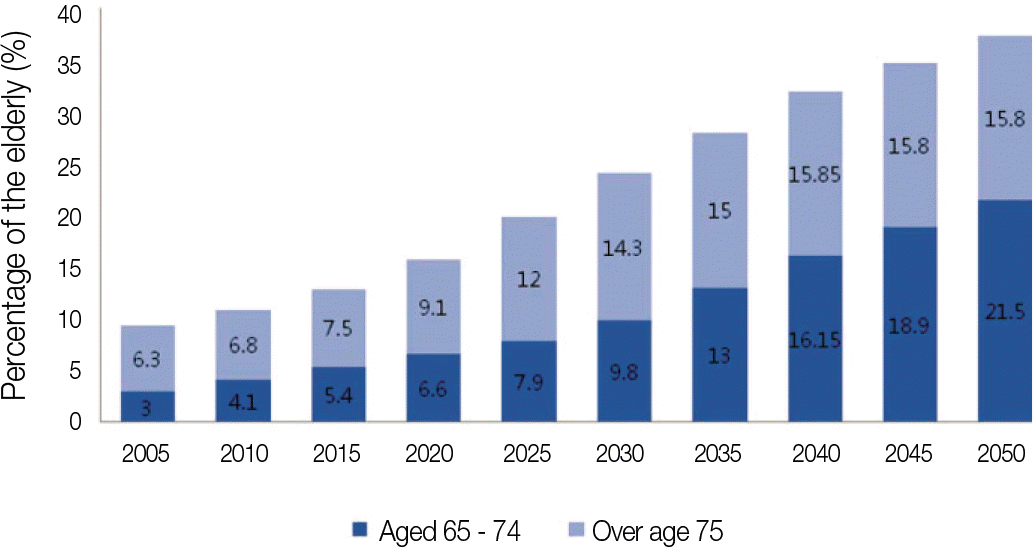
Fig. 2.
Trend of expanded life span in Korea from 1950 to 2050. Source: World population prospects, the 2008 revision, UN, 2009.
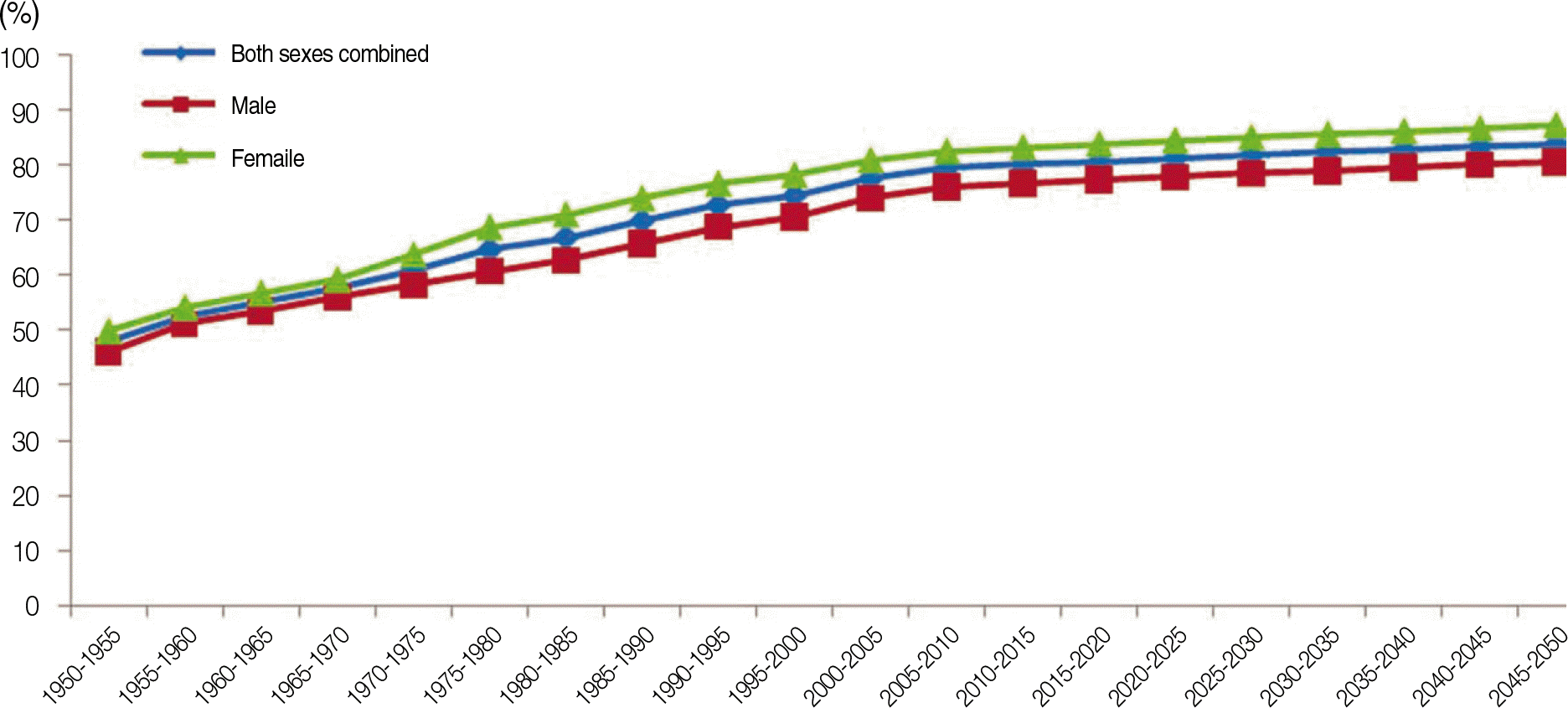
Fig. 3.
Trend of total fertility in Korea from 1950 to 2050. Source: World population prospects, the 2008 revision, UN, 2009.
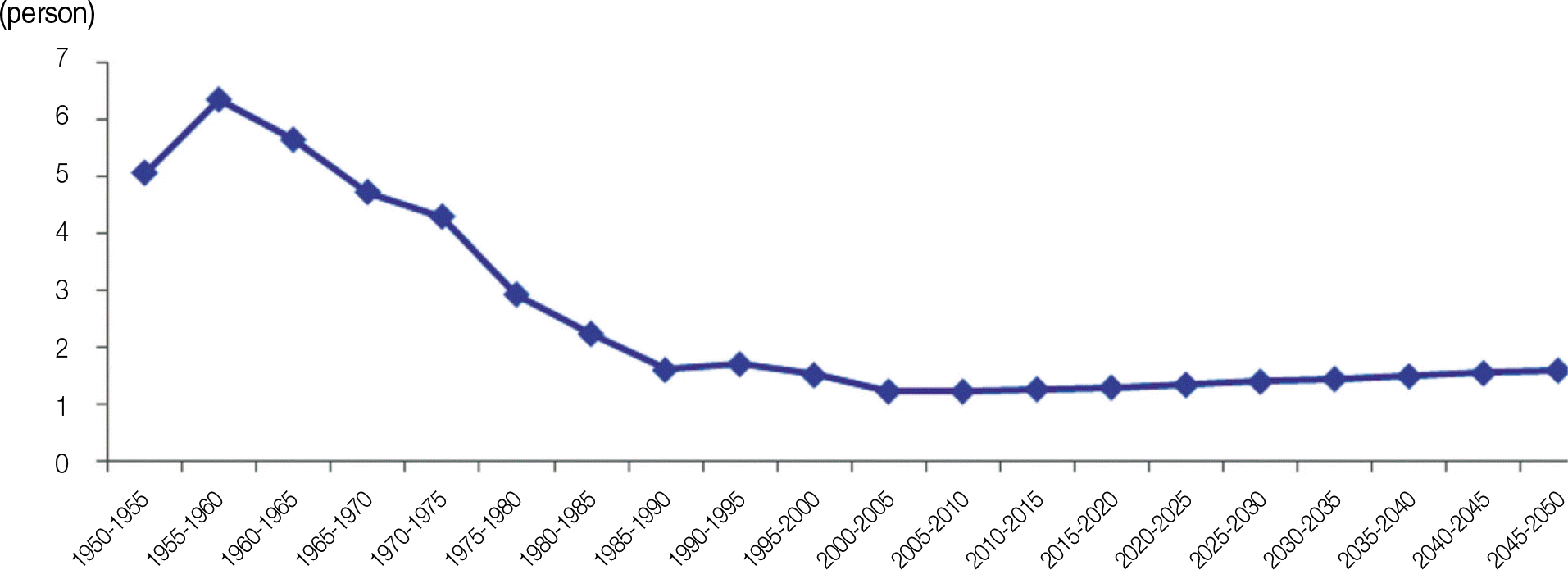
Table l.
Current status of world population and Korean population




 PDF
PDF ePub
ePub Citation
Citation Print
Print


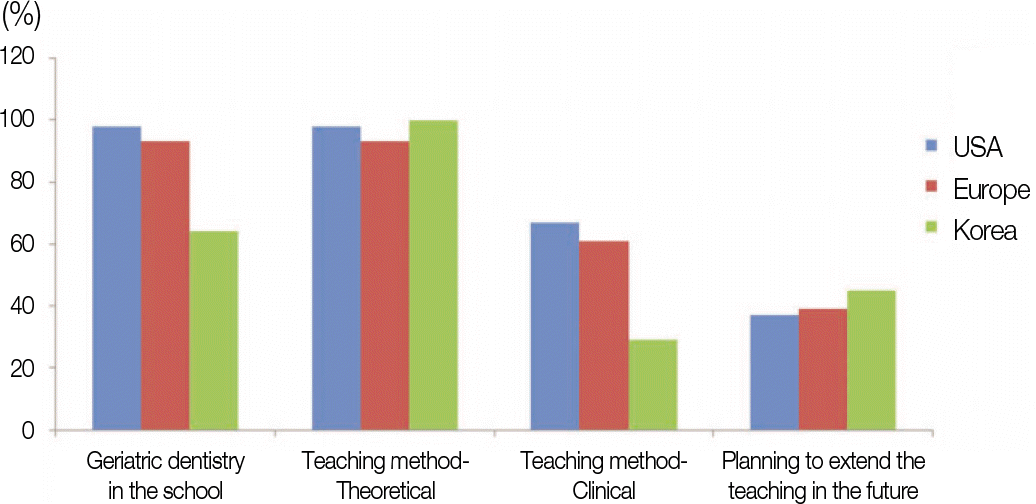
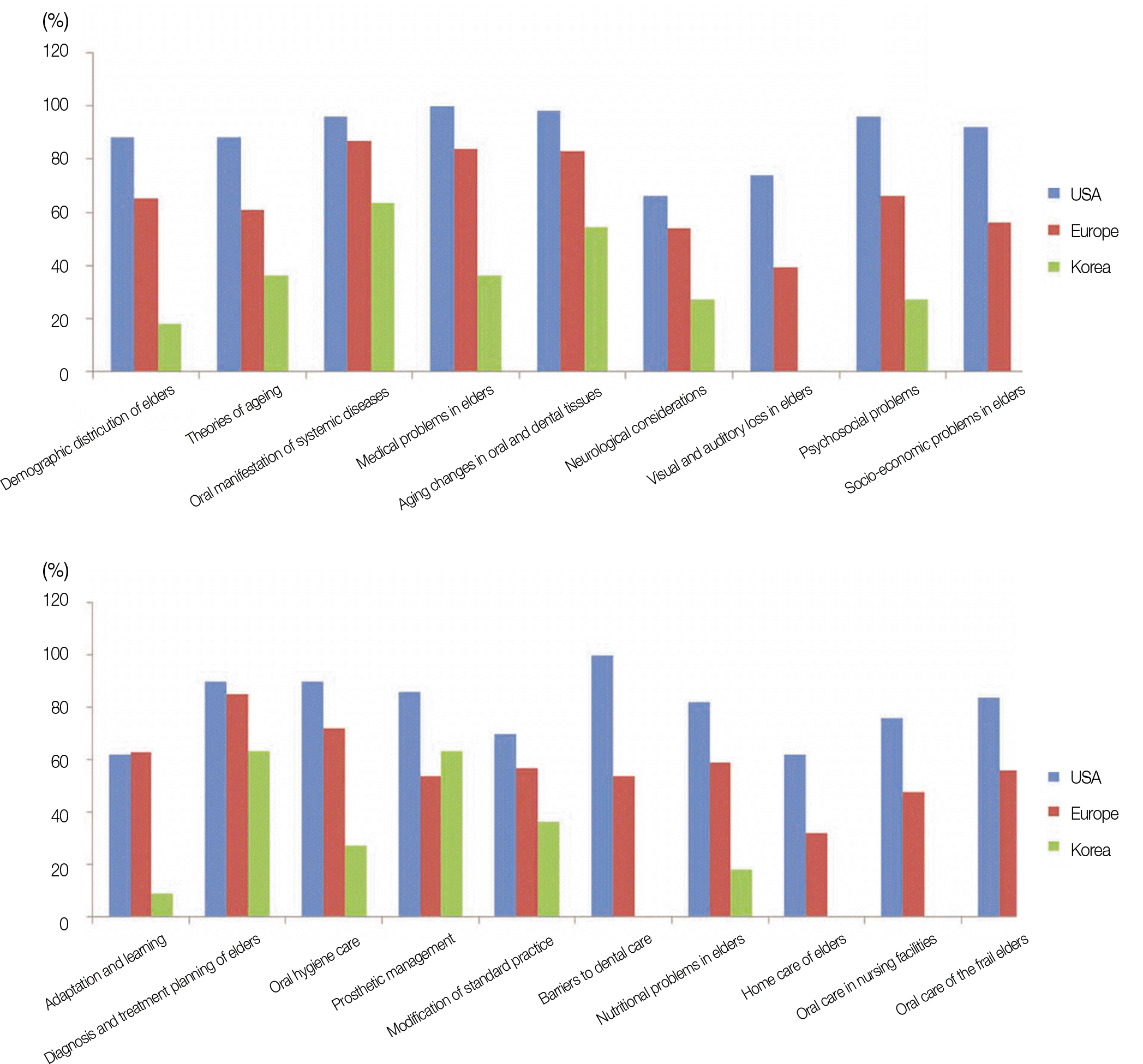
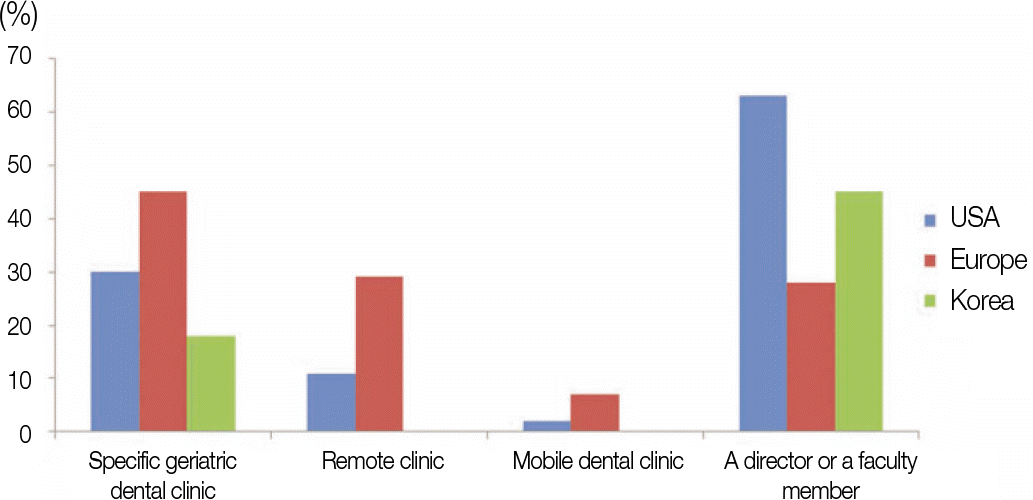
 XML Download
XML Download